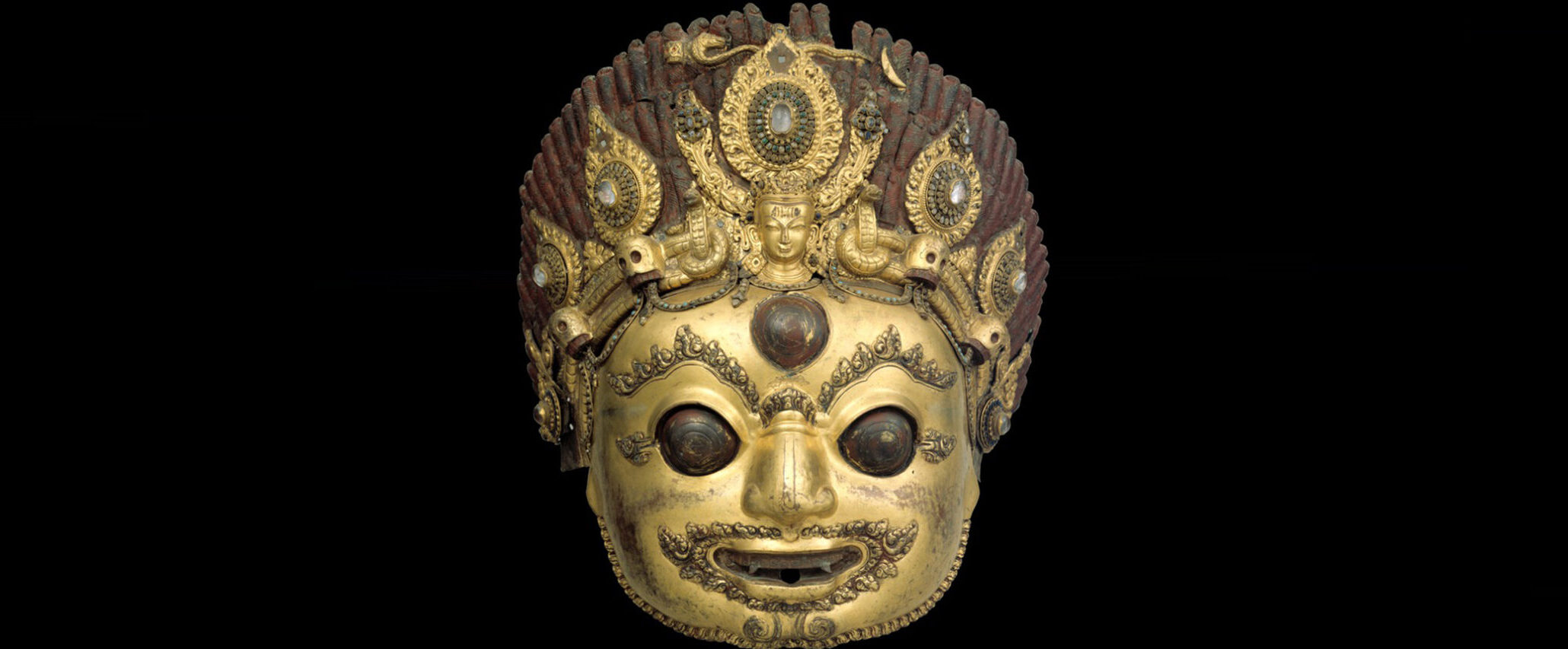
Sharon Salzberg
Mindfulness Meditation
Wednesday, August 21, 2019
1:00 PM–1:45 PM
This Week’s Work of Art
This monumental mask depicts a fierce form of the Hindu god Shiva known as Bhairava, or “The Terrifying One.” He can be identified as a form of Shiva by the small snake in his hair and the crescent at the side of its tail, both symbols associated with this god. In addition, the small head at the center of the crown is that of Shiva. In his peaceful forms Shiva is depicted as a human, but the terrifying Bhairava form is more monstrous than human, with demonic features that reflect his ultimately destructive purpose.
Yet this wrathful emanation remains connected to his nonviolent alter ego. Not only does Shiva’s serene countenance gaze down from the center of Bhairava’s crown, but the wrathful form also shares several important iconographic attributes with his peaceful counterpart, reinforcing Shiva’s dual roles as a destroyer and regenerator. The snake at the top of his crown represents the incessant cycle of time (creation, destruction, and regeneration); the skulls surrounding its base are a reminder of the inevitability of death and the need to accept it; and the crescent moon that sits beside the snake signifies the coexistent forces of creation and destruction—the waxing and waning of life, time, and the universe.
As an embodiment of Shiva’s destructive power, Bhairava is petitioned to eliminate ignorance and the ego so that spiritual liberation may be achieved. The god therefore bears the features of Hinduism’s ferocious deities: intensely bulging eyes, flaunted fangs, macabre ornaments such as skulls and snakes, and threatening girth. While this face may induce fear, his goal is to help followers. Bhairava aids us in reflecting on how fear-inducing things might be helpful in our lives, enabling us to explore the juxtaposition of good and bad fear.
About the Program
The Rubin Museum of Art presents a weekly meditation session led by a prominent meditation teacher from the New York area, with each session focusing on a specific work of art. This podcast is recorded in front of a live audience, and includes an opening talk, a 20-minute sitting session, and a closing discussion. The guided meditation begins at 15:50.
If you would like to attend Mindfulness Meditation sessions in person or learn more, please visit our website at RubinMuseum.org/meditation.
This program is supported with thanks to our presenting partners Sharon Salzberg, the Interdependence Project and Parabola Magazine.


Theme: Fear
What is the line between fear and self-deception? Taking inspiration from Hatha Daya or Bhairava, a wrathful deity who breaks through ego and fearful delusion, Sharon Salzberg discusses how to take a step back from our anxieties, and center ourselves for clearer insights.
About the Speaker

Sharon Salzberg, cofounder of the Insight Meditation Society in Barre, Massachusetts, has guided meditation retreats worldwide since 1974. Sharon’s latest books are Real Love: The Art of Mindful Connections and Real Happiness at Work: Meditations for Accomplishment, Achievement, and Peace. She is a weekly columnist for On Being, a regular contributor to The Huffington Post, and the author of several other books including the New York Times best-seller Real Happiness: The Power of Meditation, Faith: Trusting Your Own Deepest Experience, and Lovingkindness: The Revolutionary Art of Happiness. Sharon has been a regular participant in the Rubin’s many on-stage conversations.

